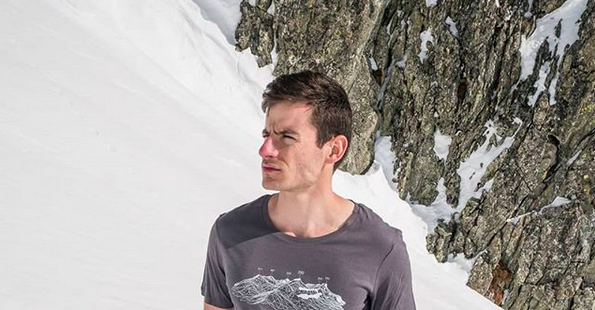Boris Pivaudran (E14), founder of Masherbrum: “We can dress the planet, sustainably”
Boris Pivaudran (E14), founder of the outdoor clothing brand, Masherbrum, launches PROCLIMB, a collection of 100% eco-design technical clothing. It is a pioneering approach, and a competitive edge in one of the highest-polluting sectors in the world.
ESSEC Alumni: What is the textile industry’s carbon footprint?
Boris Pivaudran: The textile industry is the second highest-polluting in the world, after the oil industry. Every year it produces 1.2 billion tonnes of greenhouse gases, more than air and sea travel put together. If we look at the lifecycle of a simple cotton t-shirt, we’re talking about a carbon footprint of 5kg CO2 equivalent, 3750 litres of water, and 40,000km of travel.
EA: Why does the textile industry pollute so much?
B. Pivaudran: Firstly, because its raw materials do: conventional cotton crops use an awful lot of water and pesticides, while polyesters, polyamides, and the other “polys” that make up 63% of our clothes are oil derivatives. Secondly, because the manufacturing processes use a lot of energy and generate waste, especially chemical waste from dyes. Thirdly, because the different stages of production are generally spread across different continents, incurring a huge amount of transport and return journeys. And lastly because 73% of used garments end up in landfill or incinerators. Not to mention that a garment’s lifecycle is only getting shorter under the fast fashion movement, with ever more pop-up collections and short-life products.
EA: Does the outdoor industry do any better?
B. Pivaudran: You might think that the outdoor industry sets an example, given the close relationship between its customers and the natural environment. Unfortunately, most outdoor sportswear remains made of non-recycled petrochemical fibres, manufactured in Asia.
EA: How do you tackle these challenges with your Masherbrum brand?
B. Pivaudran: Our first decision was to work exclusively with environmentally friendly fibres, meaning those produced through certified organic farming, recycled fabrics, and fabrics made in closed circuit production. We are taking this even further with our PROCLIMB collection (for which we’ve just launched a pre-sale campaign), by sourcing all of the production stages within EU Member States, so that we can reduce transport miles. That wasn’t possible with our earlier range which included organic cotton: cotton doesn’t grow in Europe.
EA:What green alternatives to cotton have you found?
B. Pivaudran: We have isolated two fibres from beech and eucalyptus trees, sourced from sustainably managed European forests, processed in Austria using 100% green inputs, and then 95% recycled. The factory itself is 80% powered by renewable energies (wind, solar, biomass, etc.). The other fibre we use is recycled synthetic fibre, made using recycled plastic bottles, for example. Zero-impact products don’t exist, but we try to keep their impact to a minimum.
EA: Does eco-design have to be more expensive than generic ranges?
B. Pivaudran: Eco-designed products are very often more expensive at the point of sale, mainly because the raw materials are more costly than conventional fibres. For 100% European production, labour costs are going to be higher than in Asia, and this is reflected in retail prices. However, if we think long-term, a fast fashion t-shirt has a six-month lifetime, actually costing more than a t-shirt with a ten-year lifetime. Not to mention the cost of an environmental disaster for the planet!
EA: Can eco-designed clothing be mass-produced while caring for the planet?
B. Pivaudran: We can dress the planet, sustainably, but it’s unrealistic to think that we can do it without consuming less as individuals. In France today, we buy an average of 9kg of new clothes every year. There’s no reason to buy so much. That said, environmentally friendly clothes means clothes with a longer lifetime, so less need to consume: it isn’t impossible to balance the equation.
EA: What other solutions can we harness to make fashion sustainable?
B. Pivaudran: There’s already a supply chain for sustainable raw materials, it just needs to be expanded. Then, we need to re-localise as many steps of production as possible, from fabrics to the finished garment, to spinning, knitting, and dyeing... to bring them closer to the end-consumers. In France, this means redeveloping our textile industry, which has been outsourced to Asia. Ultimately, we need to implement extremely strict standards, initially in Europe, to limit the use of conventional cotton and non-recycled plastic fibres in products sold on the continent.
EA: Can you cite any initiatives to copy or brands that are setting an example?
B. Pivaudran: Initiatives are flourishing all over the world, and some are extremely promising. For example, an Italian company is recycling plastic waste from the seas, and turning it into nylon for the textile industry. Our Austrian manufacturer of cellulose fibres has shown that you can combine technical performance with minimal environmental impact. And amongst the big brands who are household names, we can applaud the efforts of Patagonia, which uses a lot of organic cotton and recycled fibres in its garments, and has launched a “Worn Wear” programme of repair and reuse of used clothing.
EA: What advice would you give to consumers who want to convert to slow fashion?
B. Pivaudran: First of all, consume less: only buy what you really need, even paying a bit more for better-quality clothing. Then, buy more clothes with strong eco-design guarantees. These certifications, despite having their limits, are good indicators. For organic cotton, look for GOTS and OCS certifications. OEKO-TEX 100 certification guarantees the use of non-harmful dyes. Lastly, buy products with fewer air-miles. To do so, we need to demand maximum transparency from the brands. “Made in France” or “Made in Europe” doesn’t tell us enough, because the fabric could have been made on other continents. Like in the food industry, consumers need to be informed and brands have to show their cards.
Interview by Louis Armengaud Wurmser(E10), ESSEC Alumni Content Manager
Did you enjoy this article? So that we can keep bringing you quality content on ESSEC and its latest news, join ESSEC Alumni!

Comments0
Please log in to see or add a comment
Suggested Articles



